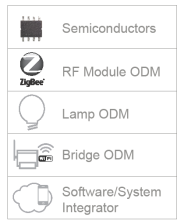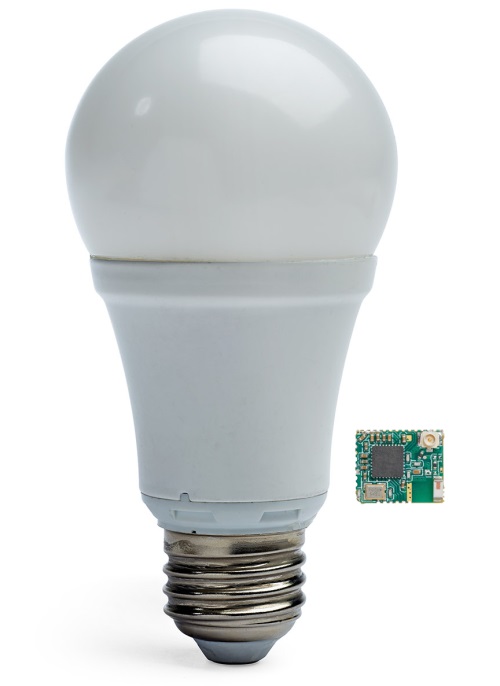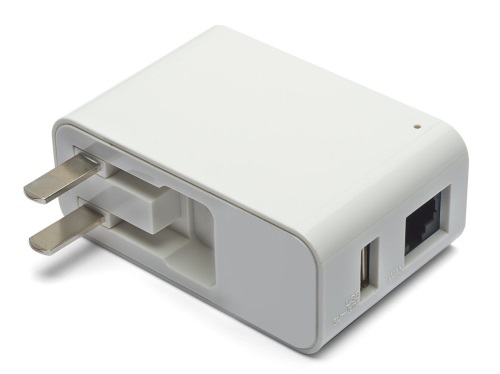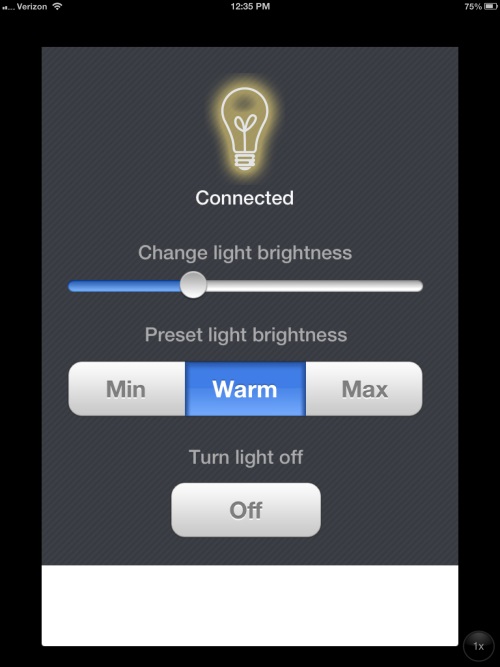Big box stores and other retailers now are offering consumers a wide choice of retrofit LED light bulbs. As prices begin to drop and dimmer compatibility improves, consumers are starting to realize the advantages of LED lighting and are upgrading from their incandescent and CFL lamps.
However, a new LED lighting category is emerging, Smart Bulbs or connected lamps, which combine LED lighting with wireless control, allowing consumers to take advantage of the advanced capabilities of LED lighting technology and ubiquitous mobile devices. To date, the first products on the market have been expensive and viewed more as entertainment devices rather than as essential home improvement products. Smart bulbs need to provide excellent quality of light while offering the ability to easily control the lights (on/off/dimming) and to set preferred mood and scenes via mobile devices — all at an attractive consumer price point. If products are developed on the correct Smart Bulb platform they can meet these criteria and transition from niche market to mass-market adoption.
Unlike standalone retrofit light bulbs, Smart Bulbs actually are a system encompassing both hardware and software. On the hardware side there are the light bulbs with an RF module, a gateway/bridge and mobile control devices. Software has to be written for the gateway/bridge and for a user data management service in the cloud server. Control applications, additionally, need to be developed including an attractive, intuitive user interfaces (UI). Given this complexity, there are multiple criteria to consider when selecting an architectural platform on which to develop a Smart Bulb product that will meet the necessary cost and performance metrics.
A comprehensive architecture includes an end-to-end solution augmented by ecosystem partners, where each of the contributors, in the value chain (see Fig. 1 ), has been selected for providing the best of breed solution. Consider the graphic for the Smart Bulb value chain; each member brings its expertise in the creation of a Smart Bulb that can win mass-market acceptance.

Fig. 1: Smart Bulb system value chain.
Since the basic building blocks of the digital architecture of a Smart Bulb are semiconductors, the most advantageous architecture for Smart Bulbs will be based upon semiconductors that feature a high level of integration, for example, multiple functionalities are designed onto a single chip enabled by innovative architecture and advanced semiconductor manufacturing process technology. The most reliable and best performing solution can be developed when working with a single semiconductor company that has a wide breadth of product offerings encompassing power electronics, wireless technology and microprocessors.
Selecting the correct ZigBee RF solution is a critical success factor when designing a Smart Bulb system. The first consideration is the RF performance, which is determined by the transmission power (Tx) and receiving sensitivity (Rx), that is gauged in a term referred to as link budget, is a sum of Tx and Rx expressed in dBm's, the higher the dBm number is, the longer the transmission distance can be achieved. Secondly, there needs to be the capability to upgrade software over the air (OTA) which requires a large-size memory footprint so copies of both the existing and the new software code can be stored. And finally, cost and size which are key to a practical bulb implementation. To meet these challenges requires a high level of integration in a ZigBee system on a chip (SoC) including on-chip power amplifier (PA) plus a large-size flash memory, all designed into a small package (see Fig. 2 ). These demands can only be met by a chip with innovative architecture.

Fig. 2: Smart Bulb with small-form-factor ZigBee RF module.
Being ENERGY STAR compliant will make the system more attractive to consumers who want to switch to LEDs for overall energy efficiency. Smart Bulbs require a constant power supply be kept connected with the network even when the light is turned off so it can be “alert” to respond to any commands issued at any time. A highly efficient offline power supply solution, at a fraction of the cost, can draw very low quiescent current that helps the entire system reach ENERGY STAR compliance. It presents a challenge to semiconductor companies to create something new and unique as opposed to existing power supply solutions.
An ordinary household has many different types of bulbs installed throughout the home. Consumers will be more apt to choose a Smart Bulb solution that allows them to strategically control lights anywhere in the home regardless of bulb type. This makes it incumbent upon manufacturers to offer Smart Bulbs in a broad array of bulb form factors. However, it is challenging to create an efficient high-performing LED driver circuit board with RF that is small enough to fit into the cavities of candles, E-17s or GU-10s. Once again, a highly integrated semiconductor architecture reduces the number of integrated circuits (IC) required. This allows for a low bill-of-materials count and therefore a small driver board. And as low cost is essential to achieving mass adoption, these highly integrated chips will also reduce the cost of the lamp.
The original device manufacturer (ODM) for the RF module can take the highly integrated RF SoC and develop an extremely small module that fits into a small bulb cavity and produces a robust RF signal. Additionally, an experienced RF module ODM can decrease time to market by assuring compliance with FCC regulations.
The lamp ODM contributes its manufacturing expertise in developing a wide range of lamp types with high-quality light that meet the required price point. Manufacturers are experts in thermal management, optical engineering, optimizing power efficiency and providing the proper level of shielding.
For lighting control management, a Smart Bulb either can be bundled with a simple, dedicated, and low-cost lighting thin bridge or it can be a component of a home automation system that is controlled by multiservice home automation gateway offered by national retailers or service providers. It is possible to develop a very-low-cost Wi-Fi bridge that, unlike an Ethernet-based bridge, does not have to be connected and co-located with the home router. With its minimal footprint, this bridge can be plugged into any outlet within the home.
The ZigBee Alliance, which develops standards for low-power wireless control of devices, has developed two standards that apply to Smart lighting platforms. ZigBee Home Automation (HA) supports a variety of home automation products so bulbs can be controlled via home automation gateway as part of a complete home network. ZigBee Light Link (ZLL) is a standard specifically for LED lighting control. As these lighting standards are interoperable, manufacturers’ options for platforms are expanded when they adopt an architecture that is certified for both ZigBee-HA and ZLL. However, as standards may evolve, it becomes even more important for a Smart Bulb to have the capability to perform OTA upgrades.
Since Smart Bulbs are a system, it is necessary to ensure that all of the elements, the hardware and the software are interoperable. Stringent interoperability (IOT) testing of the various RF components must be conducted. Both the lamp and the bridge (see Fig. 3 ) must undergo IOT tests across ZigBee and Wi-Fi networks in order to guarantee that that the systems will operate seamlessly, ensuring consumer satisfaction.

Fig. 3: The small thin bridge controller for Smart Bulb systems plugs into any household socket.
The software service providers and developers contribute to the overall user experience that includes a system that is easy to control, but also to initially set up and to maintain. The system set-up, or provisioning, requires a mature networking software and an intuitive UI application design (see Fig. 4 ). Commissioning, or adding lamps to the system is achieved with a UI design that employs innovative ideas that allows devices easily to join the network. After the system is structured, it is necessary to have reliable cloud servers so users can control the lighting system anytime/anywhere via the mobile devices.

Fig. 4: User Interface (UI) for mobile devices allows users to easily control Smart Bulbs from any location
Every link in the Smart Bulb value chain ecosystem collaborates to create a Smart Bulb system that is cost-effective and delivers an excellent consumer experience. This ecosystem provides the opportunity for traditional lighting manufacturers, as well as non-traditional players, such as manufacturers of wireless networking devices, control software developers or service providers to get into the connected lighting space. A company can select product or services from the value chain that complement their own core product line. As there are more entrants into this product category, it will increase competition and provide more choices for consumers. This in turn will drive more innovation and spur price reductions which will create the critical mass required to move Smart Bulbs or connected lights into wide market adoption.
Advertisement
Learn more about Marvell Semiconductor





